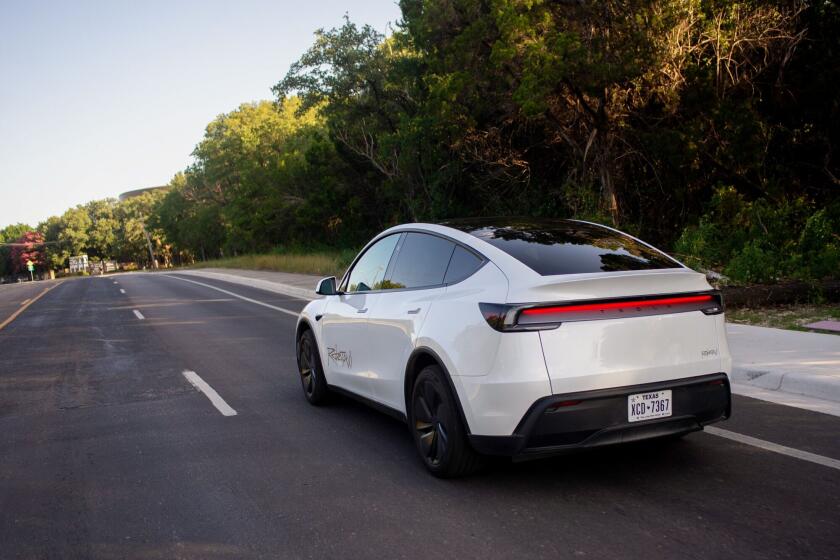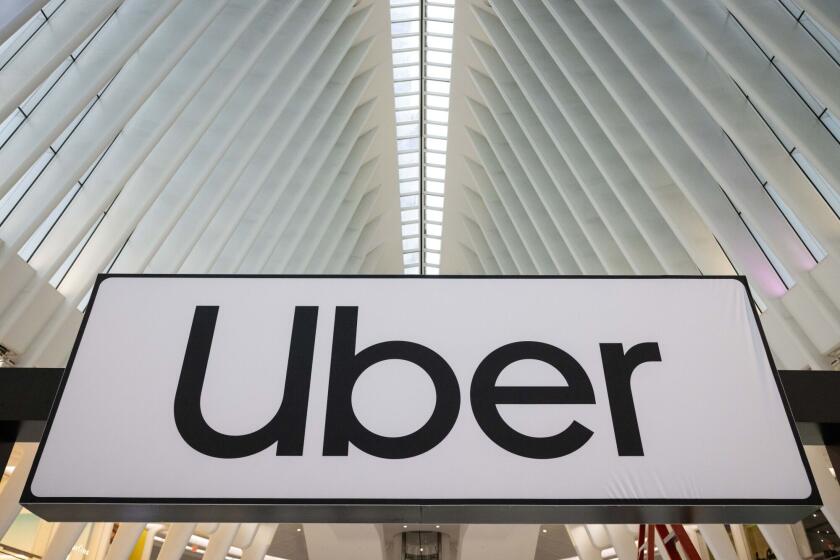The Recycling Route : Crusher Chews Up Concrete, Asphalt for Freeway Widening
- Share via
SANTA ANA — On the shoulder of the Santa Ana Freeway at Grand Avenue, the huge metal jaws of a rattling, dusty machine chomp on big blocks of concrete and asphalt, grinding up the material and spitting it onto a conveyor belt.
The belt whisks the pieces away, separating them into two streams, one made of chunks needing to be chewed up once more, and the other carrying off pieces no bigger than one square inch.
This is recycling at its ultimate.
All the concrete and asphalt came from bridges that were torn down and traffic lanes that were ripped up as part of Caltrans’ highway-widening project.
But once the crusher has done its work, the pulverized material heads toward its second life--as the high-quality base for new ramps and travel lanes as the Santa Ana Freeway is widened to six lanes along the 38-mile stretch between the Riverside Freeway and Coast Highway.
To save money and energy, the old stuff is crushed along the shoulder or in the median and then relaid below the new concrete or asphalt surface.
“It’s a major budget savings,” said Caltrans engineer Bill Gilchrist, who helps oversee the $1.7-billion widening project. “It’s needed material, and the mobile crushers are a whole new generation. It costs quite a bit to haul the concrete away to be able to recycle it.”
The roadside recycling has been going on since the widening project began three years ago. The project is expected to be completed in late 1996 or early 1997.
According to Caltrans, 30,000 tons of concrete were recycled on the Main Street intersection project in Santa Ana alone. The department does not know how many tons of concrete will be recycled during the entire widening.
The machine crunches 1,800 tons of road material a day, said foreman Bob Guerrero of the rock-crushing company Diversified Materials, as he wiped eyes bloodshot from two decades of dust and flying debris from the rock-crushing machines.
Guerrero said he expects the mound of material at Grand Avenue will be recycled by the end of the week. Then the rock crushing and recycling will begin anew on another portion of the freeway.
Next in line is the interchange of the Santa Ana and the Costa Mesa freeways, then the El Toro “Y,” where a mountain of used concrete and asphalt awaits its turn in the crusher’s jaws.
Caltrans spokesman Jim Drago said such concrete recycling is now common throughout the state.
“We have had an aggressive recycling campaign for many years now,” he said. “It’s a cost issue and it’s also an environmental issue.”
He said the material from bridges and roads that collapsed in the 1989 Loma Prieta earthquake was also recycled and used to rebuild the roads.
California isn’t the only place where the environmentally conscious have found new uses for old concrete.
When Chicago’s old Comiskey Park, built in 1910, was demolished in 1991 to make way for the new Comiskey Park, the used concrete was crushed up and became the base for area parking lots and roadways, including the reconstructed Lake Shore Drive.
More to Read
Sign up for Essential California
The most important California stories and recommendations in your inbox every morning.
You may occasionally receive promotional content from the Los Angeles Times.













